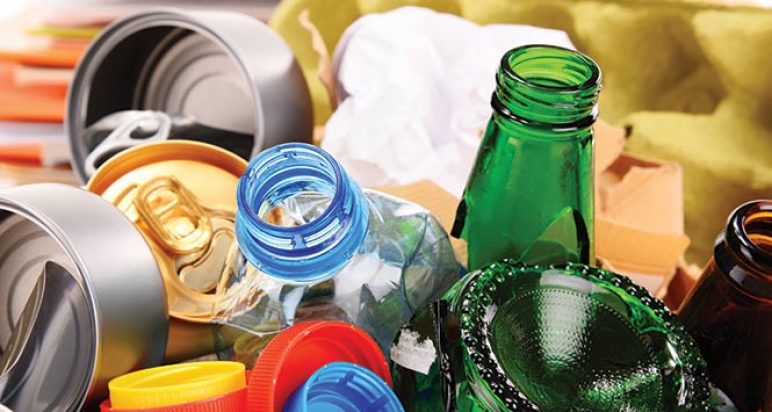In the second of our series looking at the potential implications of a Deposit Return Scheme being introduced by the Scottish Government, we analyse the dangers of fraud and look at possible alternatives to DRS.
by Kevin Scott
Danish physicist Niels Bohr once said that “If quantum mechanics hasn’t profoundly shocked you, you haven’t understood it yet.” The same could be said of the Scottish Government’s plans to introduce a Deposit Return Scheme.
To very briefly recap, the Scottish Government has asked Zero Waste Scotland to look at the feasibility of a scheme that would force local retailers to handle the return of 85% or more (because that’s the target rate) glass, plastic and metal containers, process the return of deposits to customers and stock the unwashed, uncompressed containers behind their counters for up to two weeks.
The plan is lunacy. And yet it’s still on the table. Last month’s cover story looked in detail at how a DRS scheme works; how Zero Waste Scotland gathered its insight into how such a scheme would work in Scotland; and what the retail industry and soft drinks manufacturers thought of the idea.
This month we turn our attention to viable alternatives, but before going into detail it is worth examining one further implication of a DRS that we’ve not yet touched on: fraud.
Eunomia, the company commissioned by Zero Waste Scotland to write a report on DRS, assesses the risk of fraud as “relatively low given Scotland’s geographical context and the suggested level of deposits.”
Ironically, in 2011, in a similar report for the Scottish Government, Eunomia specifically highlighted significant problems around cross-border trade, including the threat of fraud.
In a practical sense it is widely considered that given each package would be scanned for authenticity, all products would need new labels – with two possible ways of doing this. The first would see a Scotland-specific label and barcode. The report suggests costs of £1.2m for increased warehousing but this is only a small part of the extra costs that brands would incur – costs that would be passed onto the consumer.
As The Packaging Recycling Group Scotland (PRGS) says in its response to the call for evidence, “the report makes no mention of the effect that a significant increase in SKUs would have on the packaging line efficiency of producers’ manufacturing plant. It would also create stockholding and distribution problems for retailers, would increase costs of goods and likely reduce choice.”
Alternatively, UK-wide labels could be introduced. Around 75-80% of brands are sold UK-wide so this is the more likely option, but it would undoubtedly encourage people to buy drinks in England and claim deposits in Scotland.
To cite the US as an example. There is a serious issue with fraud there despite deposit levels being only 5 cents or 10 cents. As PRGS explains: “The California state body that administers the deposits system carried out a three-month study of truckloads of containers sent to California from non-deposits states. It found that $30m (£19m) was being claimed for illegal redemption in the state each year.”
Regardless of which labelling system would be implemented, retailers would incur additional training burdens to determine which labels are authentic. It is also likely that any labelling system would require a counterfeit-proof ink, which is an expense that would likely be passed onto consumers.
The soft drinks industry believes the risk of fraud could be severely damaging. It’s not just suppliers who are expressing concerns about the potential for fraud. In a joint submission, the SGF and ACS both raised the issue. “Convenience retailers… will either suffer from administrative burdens or from financial burdens from potential fraud,” says the submission.
If the scheme is introduced there would need to be a very fine balance in setting the fee at a level that encouraged consumers to return containers, but low enough that it didn’t fall on the radar of organised crime. Given a 10-20p rate has been mooted, and AG Barr has had to abandon its 30p scheme due to dwindling rates, it seems unlikely that a ‘golden’ payments exists.
According to the Irn-Bru maker one truck load could contain 160,000 crushed cans, which could fetch £16,000 at 10p and £32,000 at 20p, which makes it a potentially lucrative new opportunity for criminals. Such costs would be offset by an increase in retail price, which would impact sales for retailers.
AG Barr says: “A DRS would undoubtedly be subject to fraud, from small scale scavenging to large scale cross-border trafficking.”
Retailers too would need to consider this. We’ll use Woodlands Local as an example. In the last two weeks we sold around 3,500 cans and bottles throughout the store. So this means that if the Government hit its 85% recycling target, we would be required to keep around 2,800 uncompressed, unwashed containers in the store at any given time – while processing around £550 of 20p returns every fortnight. And remember, with a value of £550 simply stocking them in bin bags or wheelie bins out the back isn’t viable.
The alternative to DRS
The alternative to such a potentially disastrous scheme is to simply encourage consumers to recycle more. Rates for kerbside glass recycling are already at 70% so well on their way to hitting the Government’s 85% target.
Educating consumers in how best to recycle and providing information on the benefits of recycling for both them and future generations is key. As with so many aspects of life, encouraging voluntary participation is by far a better option than compulsory participation.
In 2013 CCE commissioned a study with the University of Exeter to better understand how household dynamics influence recycling behaviours. The company reports that the pioneering ‘Unpacking the Household’ study observed 20 families, couples and single-person households in Great Britain and France, in their own homes, for six months. CCE says “Householders told us that making it easy for them to recycle in the home, when the positive benefits of recycling are tangible and clear, with small meaningful and achievable actions resonate, along with an engaging, impactful and fun tone – all delivered through more consistent local authority communications – is key to empowering them to recycle more.”
The SGF and ACS believe that the most effective alternative for increasing recycling rates is to invest in expanding kerbside collections, saying: “The infrastructure is already well developed, and the public are familiar with what is required of them.”
Furthermore, providing financial support for the expansion of council collection schemes offers a more cost effective means of continuing the trend of improving recycling rates. Any such investment would cover a much wider range of materials, as the SGF and ACS point out. This would include beverage containers, along with other packaging and non-packaging materials as well. “The introduction of these deposits would have a detrimental effect on existing collection mechanisms in general and local authority kerbside collections in particular,” they say. “The deposit scheme would divert a significant amount of packaging waste from the kerbside schemes, and that may have a knock-on effect on other materials currently collected from kerbsides.”
AG Barr says that Scotland is going through a transformation where Scottish pride is at the fore, commenting: “Surely the time is ripe to build on this pride in our country and deliver a campaign that will make Scottish people think about how recycling more and littering less will make a better Scotland.”






